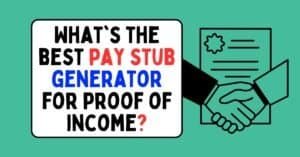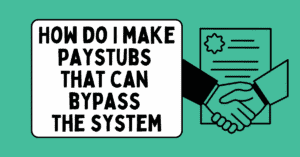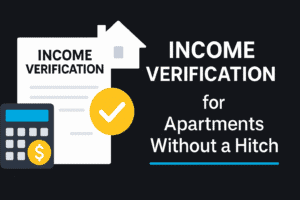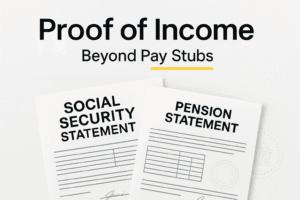Last updated: August 2025
Buying your first home is exciting—and paperwork‑heavy. Whether you’re in the United States, the United Kingdom, or Canada, lenders need clear proof of identity, income, assets, and debts. The challenge isn’t just collecting documents; it’s ensuring they’re clean, consistent, and compliant. Small mistakes can delay approvals or jeopardize deals.
FinancialDocsProvider.com helps you organise, format, and package your existing records so underwriters can verify your file quickly. We never change numbers, dates, or facts—we improve legibility, redact sensitive details, and align everything to your lender’s checklist. That compliance‑first approach speeds up reviews and reduces follow‑up questions.
To anchor our discussion, here’s a quick list of related terms, forms, and entities you’ll meet during a mortgage application:
- W‑2, 1099‑NEC/1099‑K (US wage and contractor statements); P60, P45, SA302 (UK earnings summaries); T4, NOA/T1 General (Canada)
- Pay stubs/payslips, employment letters, tax returns, bank statements
- Notice of Assessment (NOA), Schedule C, profit & loss statements for self‑employed applicants
- Identity documents: passport, driver’s licence, Social Security card, National Insurance number
- Proof of address: utility bills and credit file correspondence
- Regulators: CFPB, FTC, IRS (US); FCA and HMRC (UK); FCAC and CRA (Canada)
- KYC/AML, affordability assessments, credit checks, debt‑to‑income ratio (DTI)
- Data redaction, OCR, PDF/A export, metadata clean‑up
- Underwriting, pre‑approval vs. final approval, right to rescind (US), help to buy schemes (UK)
Requirements vary by lender. Always follow your broker’s or bank’s checklist and rely on official guidance from trusted sources.
What are the legal basics of mortgage document preparation?
Every document you submit must be authentic and unaltered in substance. Formatting that clarifies your paperwork—rotating pages, merging files, or redacting account numbers—is fine. Changing facts is not. Laws across the U.S., U.K., and Canada treat altered data as fraud. Compliance agencies emphasize that you may fix legibility or hide sensitive details, but you may not change amounts, dates, names, or other factual information.
United States. U.S. lenders operate under federal and state rules. The CFPB notes that lenders must provide a Loan Estimate within three business days of your application and a Closing Disclosure at least three days before closing, both detailing key terms and costs. You must supply accurate pay stubs, W‑2s or 1099s, bank statements, and tax returns. Altering figures can trigger investigations, civil liability, or criminal charges. Consumer agencies stress that improvements like redaction or combining PDFs are lawful; changing numbers or dates is not.
United Kingdom. British lenders follow affordability rules overseen by the FCA and HM Treasury. MoneyHelper (a government‑backed resource) lists the documents you need: utility bills, a P60, your last three months of payslips, photo identification, three to six months of bank statements, self‑employed accounts, and an SA302 for multi‑source earnings. Applicants should enter exact figures—don’t round salary numbers. Any mismatch between your application and documents can stall approval.
Canada. The Financial Consumer Agency of Canada explains that lenders ask for identification, proof of employment, proof you can cover the down payment and closing costs, details of assets and debts, recent pay stubs, and—for self‑employed applicants—CRA notices of assessment for the past two years. Providing false information is prohibited. Formatting improvements are acceptable, but you must keep the original numbers intact.
Which edits are allowed when preparing mortgage documents?
Permissible edits improve clarity and protect privacy without changing content. Regulators and compliance teams accept tidying files for readability, bundling pages into a single PDF, and redacting non‑essential data. Below are routine edits lenders accept when done carefully.
- Redacting sensitive data: Mask full account numbers, Social Security/National Insurance numbers, and bar codes, leaving only the last few digits visible. Hiding QR codes that could reveal personal links is also acceptable.
- Fixing legibility issues: Rotate or de‑skew scans, enhance contrast, remove moiré, and convert images to searchable PDFs (OCR). Add page numbers or simple bookmarks to large files.
- Merging and exporting files: Combine monthly statements into one PDF and convert file types (e.g., image to PDF/A) for accessibility and consistent presentation. Always preserve the original content.
- Annotating for clarity: Use brief cover sheets or margin notes to explain seasonal income, one‑off deposits, or FX conversions. Keep annotations separate from source documents and avoid obscuring data.
- Formatting bank statements: Add a contents page and labels, fix pagination, and remove blank pages. Redaction and organisation are lawful so long as balances and transactions remain untouched.
These edits help underwriters find what they need faster, reducing back‑and‑forth. Our proof of income editing and bank statement formatting services specialise in these lawful improvements.
What edits are illegal (and why)?
Illegal edits change facts or misrepresent a document’s origin. Even “minor” tweaks—adjusting pay, moving dates, or swapping names—cross the line into fraud. Underwriters cross‑check documents against payroll systems, tax records, and banking data. If numbers don’t tie out, you risk denial, legal exposure, and long‑term reputational harm.
- Changing amounts: Editing net pay from $2,800 to $3,500 or inflating year‑to‑date income on a pay stub is prohibited. Altering loan balances or removing overdraft fees on bank statements is also fraud.
- Altering dates or pay frequencies: Shifting pay dates to show an extra cycle or changing a bi‑weekly schedule to weekly misrepresents earnings and will be flagged.
- Faking logos or letterheads: Copying a bank or employer logo onto another document or inserting self‑created pages misleads reviewers. Authentic documents carry metadata and security features that underwriters check.
- Deleting or hiding transactions: Removing negative balances, chargebacks, or NSF fees from statements is illegal. Lenders look for consistency across all records.
- Fabricating tax forms or payslips: Re‑creating a W‑2, P60, or SA302 or editing reported numbers is fraud and may lead to civil or criminal penalties.
Beyond legal consequences, falsified documents damage trust. Lenders share fraud intel, and a flagged application can haunt future borrowing. Our team never alters facts; we only format and organise authentic documents.
When do first‑time buyers need professional document formatting?
Lenders are picky because they must prove affordability and verify identity. A tidy, coherent file speeds up review and reduces stressful back‑and‑forth. Professional formatting helps most when you have multiple documents, variable income, or cross‑border complexity.
US W‑2 or UK employee applicant
If you’re salaried, lenders usually want your last two years of W‑2s (or P60s in the U.K.), recent pay stubs/payslips, and two to three months of bank statements showing payroll deposits. MoneyHelper advises gathering utility bills, P60s, three months of payslips, photo ID, and three to six months of bank statements. We can merge payslips and bank statements into a single PDF, rotate mis‑scanned pages, and redact account numbers. The result is a clear income chronology that inspires underwriter confidence.
Self‑employed or gig worker
Self‑employed borrowers face greater scrutiny because income fluctuates. In the U.S., lenders typically request the last two years of personal and business tax returns, current profit & loss statements, and several months of bank statements. In the U.K., MoneyHelper notes that self‑employed people should provide two to three years of accounts from an accountant plus an SA302. In Canada, the FCAC specifies CRA notices of assessment for the past two years and proof of earnings. We organise tax returns, SA302s, and notices of assessment, label them clearly, and redact privacy‑sensitive data.
Gifted deposit or multiple income sources
Many first‑time buyers receive family help. Lenders want a gift letter and proof the funds reached your account. If you have multiple income streams (e.g., a part‑time job plus freelance work), MoneyHelper’s checklist includes “Proof of Deposit” and SA302 for multi‑source income. We assemble bank statements, gift letters, payslips, and invoices in order, and add a concise cover sheet mapping each deposit to its source.
Cross‑border or non‑standard cases
If you’ve moved countries or have dual citizenship, you may hold documents from several jurisdictions. Underwriters may require certified translations or explanations of exchange rates. Our team can annotate conversions (e.g., “Converted on 12 Aug 2025 at XE rate 1 USD = 0.79 GBP”) and keep original numbers intact. Non‑residents or visa holders may need extra ID and immigration paperwork. Check with your mortgage adviser for specifics.
Whatever your scenario, professional formatting keeps your packet concise, coherent, and compliant—traits lenders value.
How does FinancialDocsProvider.com format and deliver your documents?
Our process is structured and transparent. We refine what you provide; we never fabricate information. Each step protects your privacy and makes underwriting faster.
- Intake: Upload original documents (pay stubs, bank statements, tax returns, ID, utility bills, deposit proofs) through our secure portal. Include your lender’s checklist and any special instructions. If something appears inconsistent, we flag it and suggest asking your bank or payroll provider for a corrected version.
- Reconciliation: We cross‑check names, dates, and amounts across documents. For example, we verify that net pay on your recent pay stubs aligns with payroll deposits on bank statements and that the address on your ID matches your utility bill. If something doesn’t tie out, we alert you so you can fix it legally—only your bank, payroll provider, or tax authority can correct factual errors.
- Formatting & redaction: We rotate pages, fix orientation, merge multi‑page statements, perform OCR, add bookmarks, and create a contents page. We redact full account numbers and bar codes while leaving the last few digits visible. These steps improve readability and privacy without altering underlying data.
- Quality control: A second editor reviews the package against your instructions and the lender’s requirements. We confirm chronology, check for missing pages, and ensure file names and metadata are clear and consistent.
- Delivery & support: You receive a polished PDF package via encrypted download link plus a simple checklist referencing each included document. Turnaround time is typically 24–48 hours for standard projects. If your lender asks for more items, we help you add them. We maintain strict confidentiality and never share your documents with third parties.
Our pricing is transparent—see our pricing page for details. For more on our ethos, visit about us.
What documents do you need? A mortgage application checklist
A well‑organised packet helps underwriters assess eligibility quickly. Use this checklist for the U.S. and U.K., with notes for self‑employed applicants and those with complex income. Always confirm with your lender’s specific list, since requirements can vary.
United States
- Identification: Government‑issued photo ID (driver’s licence or passport) and a Social Security card or ITIN.
- Proof of income: Last two years of W‑2s for salaried employees; recent pay stubs; 1099s for contractors; and two years of personal and business tax returns for self‑employed borrowers. Some lenders also request year‑to‑date profit & loss statements and copies of business licences.
- Bank statements: Two to three months of recent statements for checking and savings. Underwriters use these to verify deposits and down‑payment funds. MoneyHelper cautions that printouts of online statements may not be acceptable—hard copies or certified copies may be required.
- Employment verification: Contact details for your employer’s HR or payroll team. Some lenders require a letter confirming title, salary, and start date.
- Assets and debts: Statements for retirement accounts, investments, auto and student loans, and credit cards. Be prepared to document large deposits or withdrawals.
- Down‑payment documentation: Records showing the source of funds (savings, asset sale, or gift). If a gift is involved, include a signed gift letter and a bank statement showing the transfer.
- Real estate contract: A copy of the purchase agreement for the home you plan to buy, with address and agreed price.
- Additional documents: Divorce decrees, child support orders, bankruptcy discharge papers, or other court documents if applicable.
United Kingdom
- Identification: Passport or driving licence, plus proof of residency status if applicable.
- Proof of income: Your last P60 and the previous three months’ payslips for employees. Self‑employed applicants should supply two to three years’ accounts prepared by an accountant and an SA302 tax calculation with a Tax Year Overview.
- Bank statements: Three to six months of statements for all personal accounts. These should show salary deposits, rent, and regular expenses. MoneyHelper notes that some lenders require certified copies.
- Proof of deposit: Evidence of savings or gifted funds. Provide a savings statement or a letter from the gift giver confirming the money does not need to be repaid.
- Employment & residency details: Your current address and at least three years of prior addresses. Include your employer’s contact information and contract details if on a fixed‑term contract.
- Credit commitments: Statements for existing loans, credit cards, and other commitments. Lenders assess affordability and may ask about high balances.
- Property details: The property address and purchase price, estate agent details, and your solicitor’s contact. Lenders use this to verify value and identify conflicts of interest.
General packaging tips
- Organise documents chronologically and label them clearly (e.g., “Pay Stubs – June–Aug 2025”).
- Ensure names and addresses match across all documents. If you recently moved, include proof of previous and current addresses.
- Avoid rounding salary or bonus numbers. MoneyHelper emphasises that your application must match the supporting documents.
- For self‑employed applicants, include a profit & loss statement and a brief explanation of income variability. Add two years of tax returns and relevant notices of assessment (SA302, NOA, etc.).
- Provide paper and digital versions if required. If online statements are rejected, ask your bank to print and stamp certified copies.
- Keep originals safe. If authenticity is questioned, you’ll need to produce the unedited versions.
Following this checklist reduces last‑minute requests and signals to lenders that you’re organised and trustworthy.
What are common red flags and mistakes?
Underwriters are trained to find inconsistencies. Avoid these pitfalls to keep your application moving. A short pre‑submission review can eliminate most issues.
- Mismatched names or addresses: If your pay stub lists a maiden name but your bank statement has your married name, include supporting documents like a marriage certificate. Inconsistent addresses can raise identity concerns.
- Missing pages or illegible scans: Incomplete statements or fuzzy PDFs frustrate reviewers. Use high‑resolution scans and confirm no pages are missing. Our service combines and cleans multi‑page files for clarity.
- Unexplained large deposits: Lenders must verify the source of funds. Provide a gift letter, sales contract, or invoice for any deposit outside your normal pattern. Large unexplained cash deposits can trigger AML scrutiny.
- Rounding salary figures: MoneyHelper advises against rounding up. Lenders compare applications with payslips and tax forms; discrepancies delay approvals.
- Out‑of‑date documents: Submitting statements older than three months (or six months for some U.K. lenders) suggests you may not meet current criteria. Provide the most recent versions.
- Unreadable or inconsistent metadata: Mismatched document dates, file names that don’t match contents, or metadata showing edits by unknown software can raise suspicion. We standardise metadata to avoid confusion.
- Falsification attempts: Altering amounts, pay dates, or employer names is illegal and will be detected. It’s the fastest way to be denied and reported for fraud.
Our “red flag” review looks for anomalies so you can correct them before sending documents to your lender.
Where can you find official resources and further reading?
Mortgage requirements evolve, so consult authoritative sources for the latest guidance. These links are a solid starting point for U.S., U.K., and Canadian applicants.
- Consumer Financial Protection Bureau (CFPB) – official U.S. mortgage guides, including sample Loan Estimates and Closing Disclosures.
- MoneyHelper: How to apply for a mortgage – government‑backed U.K. guidance on required documents and application tips.
- Financial Consumer Agency of Canada: Getting preapproved – pre‑approval steps and documentation needs in Canada.
- GOV.UK: Get your SA302 tax calculation – obtain proof of self‑employed income for U.K. mortgage applications.
- Utility bill as proof of address – our internal guide on formatting utility bills and pairing them with income documents.
- Six months of bank statements – why extended bank history can improve rental and loan applications.
- Pay stub vs bank statement – which document lenders prefer and why.
- W‑2 vs P60 vs SA302 – when each income document matters in the U.S., U.K., or Canada.
- Pricing & services – details on our proof‑of‑income editing and bank statement formatting packages.
If you need personal guidance, please contact our team.
FAQs
1. What documents do I need to apply for a mortgage as a first‑time buyer?
Lenders typically require identification (passport or driver’s licence), proof of income (recent W‑2s or P60 plus payslips), bank statements covering two to six months, proof of deposit, employment details, and—if self‑employed—tax returns and SA302 or notices of assessment. MoneyHelper lists utility bills, P60s, payslips, and bank statements for the U.K. The Financial Consumer Agency of Canada notes that identification, proof of employment, and proof of down payment are required for pre‑approval.
2. Are digital statements acceptable for mortgage applications?
Some lenders accept statements downloaded from your bank’s portal, but others require hard copies or certified printouts. MoneyHelper warns that online printouts may not be acceptable and you may need copies certified by your bank or solicitor. Always check your lender’s instructions; when in doubt, order official statements.
3. How many months of bank statements do lenders typically request?
In the U.S., lenders usually ask for two to three months of statements, though some programs (e.g., FHA or self‑employed loans) may require more. In the U.K., lenders generally want three to six months. Canada’s FCAC indicates that recent financial statements will be reviewed to verify down‑payment funds. Ask your lender for exact timeframes.
4. What if I’m self‑employed?
Self‑employed applicants must provide more evidence of income stability. In the U.K., MoneyHelper advises two to three years of accounts from an accountant plus an SA302. In Canada, the FCAC notes lenders may ask for CRA notices of assessment for the past two years. In the U.S., expect two years of personal and business tax returns, current profit & loss statements, and bank statements. Professional formatting keeps this bundle clear and coherent.
5. Do I need to include my spouse or partner’s information?
If you’re buying together or relying on both incomes, lenders will require documents for each applicant: ID, pay stubs/payslips, bank statements, and credit commitments. They will assess combined debt‑to‑income ratios. If one partner has poor credit, consider strategies like applying with one income or improving credit before applying.
Need accurate, reliable financial documents fast? Contact FinancialDocsProvider.com now.
Author: FinancialDocsProvider.com Editorial Team. Our writers specialise in compliance‑first document preparation and have helped thousands of renters, borrowers, and entrepreneurs organise their financial paperwork. Learn more about our process.









Add comment